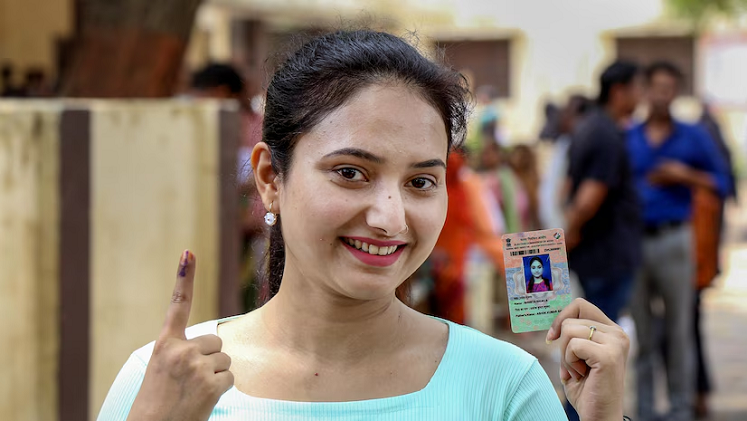How to Vote in Lok Sabha Elections: A Complete Guide

Voting in the How To Vote Lok Sabha is not just a right but a vital responsibility for every eligible citizen in India. As one of the largest democracies in the world, India’s elections are a fundamental part of the country’s democratic process. By voting, you contribute to choosing the representatives who will shape the laws, policies, and future of the nation.
In this article, we will cover all aspects of how to vote in Lok Sabha elections, including the steps to follow, necessary documentation, eligibility criteria, common FAQs, and more. Whether you are a first-time voter or need a refresher, this guide will provide you with everything you need to know to ensure your vote counts.
Read More: https://photosqueen.org/
Understanding Lok Sabha Elections
Before we dive into the voting process, it is important to understand the Lok Sabha. The Lok Sabha, or the House of the People, is the lower house of the Indian Parliament. It is responsible for representing the public and enacting laws that affect the country’s citizens. The Lok Sabha comprises 545 elected members, who serve a term of five years.
Elections for the Lok Sabha are conducted at the national level, with each state and union territory having designated constituencies. The people of India vote to elect their representatives to the Lok Sabha. The process is one of the largest electoral events in the world, involving millions of voters across the country.
Table: Key Voter Documents and Their Use
| Document Type | Purpose | Accepted? |
|---|---|---|
| Voter ID | Primary identification for voting | Yes |
| Aadhar Card | Alternative ID for voter verification | Yes |
| Passport | Identification for voting | Yes |
| Driving License | Valid for voter identification | Yes |
| Ration Card | Accepted in some cases | Yes |
| Bank Passbook | In some regions, acceptable as ID | Sometimes |
Steps on How to Vote in Lok Sabha Elections
Check Your Eligibility to Vote
Before you can cast your vote in the Lok Sabha elections, ensure that you meet the following eligibility criteria:
Indian Citizenship: Only Indian citizens are eligible to vote in Lok Sabha elections.
Age Requirement: You must be at least 18 years old on the day of voting.
Voter Registration: You must be a registered voter. If you are not registered, you will need to apply for voter registration with the Election Commission of India (ECI).
Important Note: The Election Commission of India conducts voter registration drives periodically. If you are not registered, you must apply before the election date. You can do this online via the ECI website or in person at your local Election Office.
Verify Your Name in the Voter List
Once you have ensured your eligibility, the next step is to verify that your name appears in the voter list. The voter list is a compilation of all eligible voters in a constituency and is updated by the Election Commission.
You can check your name on the voter list via the Election Commission’s official website.
If your name is not listed, you can file a complaint or request its inclusion before the election date.
Tip: It is advisable to check the voter list ahead of time to avoid any last-minute complications on the day of voting.
Find Your Polling Booth
Each registered voter is assigned a polling booth based on their constituency. You need to visit the assigned polling booth to cast your vote. Polling booth locations are listed on the Election Commission’s website and can also be found in local government offices.
Polling stations are typically set up in schools, community centers, and other public buildings.
It’s important to locate your booth before Election Day to avoid delays.
Gather the Required Documents
To vote, you need to carry valid identification documents. These documents help election officials verify your identity and prevent fraudulent voting. The most commonly accepted identification documents are:
Voter ID Card: Issued by the Election Commission of India, it is the most common document for voter identification.
Aadhar Card
Passport
Driving License
Ration Card (in some cases)
Make sure to carry one of these documents to the polling booth. It is also advisable to carry a photocopy of your identification as a backup.
Visit the Polling Booth
On Election Day, you must go to the assigned polling booth to cast your vote. Follow the steps below when you arrive:
Stand in the Voting Line: Polling stations will have a queue for voters. Maintain order and stand in the line for your turn.
Show Your ID: The polling officials will verify your identity and cross-check your name with the voter list.
Get Your Finger Marked: Once your identity is verified, your finger will be marked with indelible ink, which shows that you have voted.
Receive Your Ballot Paper or EVM: Depending on whether the constituency uses paper ballots or Electronic Voting Machines (EVMs), you will either receive a ballot paper or be directed to an EVM booth.
Cast Your Vote:
Paper Ballot: Mark your vote with a tick or cross beside the candidate’s name.
EVM: Press the button next to the symbol of the candidate you wish to vote for.
Exit the Booth: After casting your vote, you will exit the polling booth. You are required to maintain confidentiality about your vote.
Important Notes:
Ensure that you do not leave the polling booth before casting your vote.
You can request a replacement ballot paper if you make a mistake while marking your vote.
Secrecy of Vote: Your vote is confidential. No one is allowed to know whom you voted for.
Leave the Polling Booth
After you’ve cast your vote, you can leave the polling booth. Remember to maintain the secrecy of your vote and not discuss your choice with others until after the polling process is over.
Frequently Asked Questions (FAQs)
1. Can I vote without a Voter ID card?
Yes, you can vote without a Voter ID card if you have another government-issued identification document, such as an Aadhar card, passport, or driving license. The Voter ID is not mandatory but helps streamline the process.
2. What should I do if my name is not in the voter list?
If your name is missing from the voter list, you should immediately contact the local election office or the Election Commission. You can file a complaint and apply to have your name added. However, this should be done well before Election Day to avoid issues.
3. Can I vote if I am not in my home state?
If you are a registered voter, you can vote in your assigned polling booth, regardless of whether you are in your home state or elsewhere. However, if you are traveling on Election Day, you should ensure that you are near your designated polling booth to vote.
4. How do I find out the candidates contesting in my constituency?
Information about candidates contesting in your constituency will be made available in newspapers, online portals, and via the Election Commission’s official website. You can also inquire at your local polling booth.
5. Can I vote if I am overseas?
No, NRIs (Non-Resident Indians) are not allowed to vote in the Lok Sabha elections unless they are physically present in India on the day of voting. There is no provision for absentee voting for overseas citizens.
6. What if I accidentally press the wrong button on an EVM?
If you press the wrong button, you cannot change your vote on the EVM. However, if you are using a paper ballot and make a mistake, you can request a new one.
Conclusion
Voting in the Lok Sabha elections is an important civic duty that allows you to have a direct say in the governance of India. Understanding the step-by-step process, ensuring that you meet the eligibility criteria, and being prepared with the necessary documents will make the voting process smoother and more efficient.
By following the steps outlined in this article, you will be fully equipped to cast your vote in the Lok Sabha elections and contribute to the democratic process of India. Always remember, your vote matters, and it is your responsibility to ensure that you actively participate in this vital national event.





